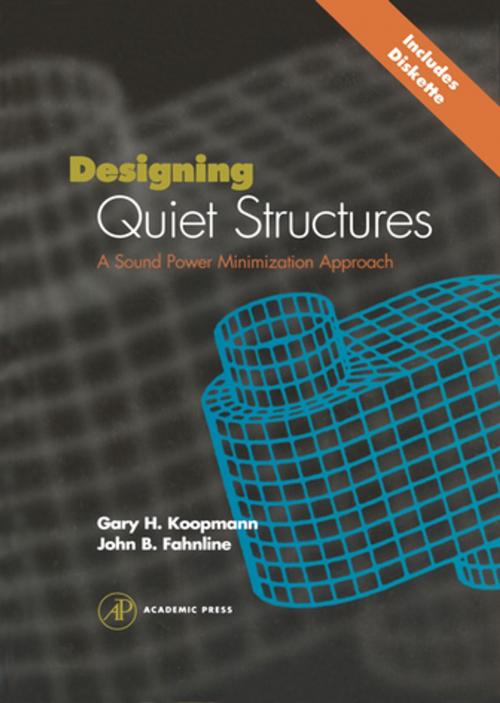Designing Quiet Structures
A Sound Power Minimization Approach
Nonfiction, Science & Nature, Technology, Construction & Construction Trades, Engineering| Author: | Gary H. Koopmann, John B. Fahnline | ISBN: | 9780080504049 |
| Publisher: | Elsevier Science | Publication: | October 13, 1997 |
| Imprint: | Academic Press | Language: | English |
| Author: | Gary H. Koopmann, John B. Fahnline |
| ISBN: | 9780080504049 |
| Publisher: | Elsevier Science |
| Publication: | October 13, 1997 |
| Imprint: | Academic Press |
| Language: | English |
This book is the first of its kind. It provides the reader with a logical and highly quantitative means of including noise as a parameter in the early design stages of a machine or structure. The unique and unified methodology builds upon the familiar disciplines of acoustics, structural dynamics and optimization. It also exemplifies the art of simplification - the essence of all good engineering design.
Strategies for designing quiet structures require extensive analytical and experimental tools. For computing the sound power from complex structures the authors recommend a new 3-D, lumped parameter formulation. This fully developed, user-friendly program can be applied generally to noise-control-by-design problems. Detailed instructions for running the application are given in the appendix as well as several sample problems to help the user get started.
The authors also describe a new instrument: a specially developed resistance probe used to measure a structure=92s acoustic surface resistance. As an example, the procedure is outlined for measuring the valve cover of an internal combustion engine. Indeed, throughout the book the reader is presented with actual experiments, numerical and physical that they can replicate in their own laboratory.
This is a must-have book for engineers working in industries that include noise control in the design of a product. Its practical and didactic approach also makes it ideally suited to graduate students.
- First text covering the design of quiet structures
- Written by two of the leading experts in the world in the area of noise control
- Strong in its integration of structural dynamics, acoustics, and optimization theory
- Accompanied by a computer program that allows the computation of sound power
- Presents numerous applications of noise-control-by-design methods as well as methods for enclosed and open spaces
- Each chapter is supported by homework problems and demonstration experiments
This book is the first of its kind. It provides the reader with a logical and highly quantitative means of including noise as a parameter in the early design stages of a machine or structure. The unique and unified methodology builds upon the familiar disciplines of acoustics, structural dynamics and optimization. It also exemplifies the art of simplification - the essence of all good engineering design.
Strategies for designing quiet structures require extensive analytical and experimental tools. For computing the sound power from complex structures the authors recommend a new 3-D, lumped parameter formulation. This fully developed, user-friendly program can be applied generally to noise-control-by-design problems. Detailed instructions for running the application are given in the appendix as well as several sample problems to help the user get started.
The authors also describe a new instrument: a specially developed resistance probe used to measure a structure=92s acoustic surface resistance. As an example, the procedure is outlined for measuring the valve cover of an internal combustion engine. Indeed, throughout the book the reader is presented with actual experiments, numerical and physical that they can replicate in their own laboratory.
This is a must-have book for engineers working in industries that include noise control in the design of a product. Its practical and didactic approach also makes it ideally suited to graduate students.
- First text covering the design of quiet structures
- Written by two of the leading experts in the world in the area of noise control
- Strong in its integration of structural dynamics, acoustics, and optimization theory
- Accompanied by a computer program that allows the computation of sound power
- Presents numerous applications of noise-control-by-design methods as well as methods for enclosed and open spaces
- Each chapter is supported by homework problems and demonstration experiments















